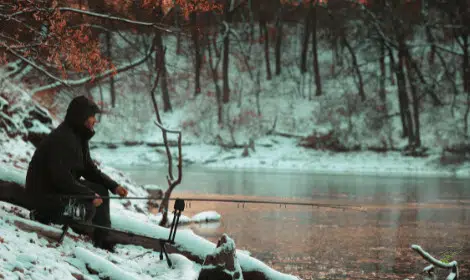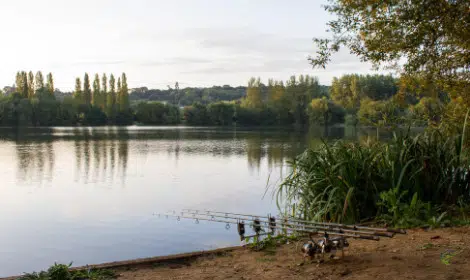
If you’re a carp angler, you will be well aware that carp behave differently to other fish species swimming in our waters and catching them can be challenging.
To become a successful carp angler, you not only need to get to grips with all of the tackle available, the rigs, baits and baiting approaches but also how they act in the water and in certain situations.
Carp react to external weather conditions and also the seasons and the temperature of the water, and if you want to give yourself the best chances of success, then you need to learn about all of these.
One of the reasons that carp react so much to the seasons is due to their body temperature which fluctuates with the water temperature around them.
In this post, I’m going to take a drive into if carp are cold-blooded and how this can have an impact on your fishing approach.
So, are carp cold-blooded?
Are Carp Cold Blooded?
Yes, like a lot of fish species, carp are cold-blooded. This has a massive impact on how they behave in the water, and by learning how you can add another point to your arsenal of how to catch them.
As these fish are cold-blooded, their body temperatures will be presented from the surrounding water.
So, if the water is really warm or cold, then so will the carp.
Carp evolved in warmer climates and, contrary to what a lot of people believe, are not native to the UK and were introduced centuries ago by monks.
This is another reason why carp’s behaviour is highly impacted in the cold waters of the UK throughout the winter months.
If you are in for some winter carp angling, then you should remember that carp are cold-blooded and will act accordingly.
Let’s take a look at how carp common react to freezing water temperatures and what this means for your fishing approach.
How Do Carp Behave in Cold Water?

As the air temperature falls significantly into winter to as low as near 0, the cold body temperature of carp means their metabolism slows significantly, and they will move much less and therefore feed far less.
In long periods of cold weather where the water temperature has dropped accordingly, the fish can even enter what is called a state of “torpor” and can spend time motionless, usually in deeper parts of the lake or holed up around features.
During these cold periods, the carp population will usually flock to areas of the lake where they feel the most comfortable. In various studies use fish tracking technology where they can all congregate in a small area.
These areas could be areas of sunken trees, weed beds and other snags where they feel most comfortable.
A lot of people think that carp will stop feeding completely, but this is not the case, and the fish can feed for 12 months of the year.
During winter these feeding windows will usually only be once or twice per day depending on the conditions, usually around the warmest part of the day or at dusk or dawn.
How Do Carp Behave in Warm Water?

On the other hand, when the waters are warmed and the carp’s body temperature far warmer, the fish react almost the opposite way.
Although warmer water will see the carp more active and ready to actively feed throughout the day, temperatures that are too warm can also see the carp to hide away as the water will contain less dissolved oxygen.
Spring and autumn in the UK seem to provide the best sport for carp angling as the water is generally not too warm or too cold, and the fish can feed comfortably.
Spring
One main reason is the increasing water temperatures. When water temperatures increase after long periods of low temperatures in winter, carp move into the shallows where the water is the warmest, bathing in sunlight and just enjoying life, so to speak.
Spring is also the spawning season, which is another reason why the carp are up in the shallowest areas of the lake, they gather in abundance, and you will see a flurry of activity on the surface.
After the fish spawn, they typically stay in the shallows for a decent amount of time as the temperatures continue to increase. The warming water increases their metabolism, which in turn means that they feed more frequently. Couple the warming water with the fish recovering from the arduous spawn, and you have voraciously feeding carp in shallow bays and banks en masse, and I don’t need to tell you why that’s a good thing as an angler.
Spring is a great time to try stalking and margin fishing because of all the fish pushing into ultra-shallow water. If you’re not familiar with the tactics and gear involved in margin fishing the shallows, we have you covered! We have how-to articles on spring carp fishing, margin fishing, and stalking here on this blog.
Autumn
Autumn is the other season that is arguably the best season for carp fishing. And it’s really a showdown between the two seasons of spring and autumn.
As winter approaches and the water temperatures slowly start to drop over the course of a couple of months, the feeding activity of carp can and will go into overdrive, as is the case with other species, particularly predatory ones.
Fish know when winter approaches, and the steadily decreasing water temperatures are their cue to strap on the feedbag. They have to feed often to stock up fat reserves for the long winter ahead, and throughout the autumn, you will encounter the fattest fish you have seen all season.

